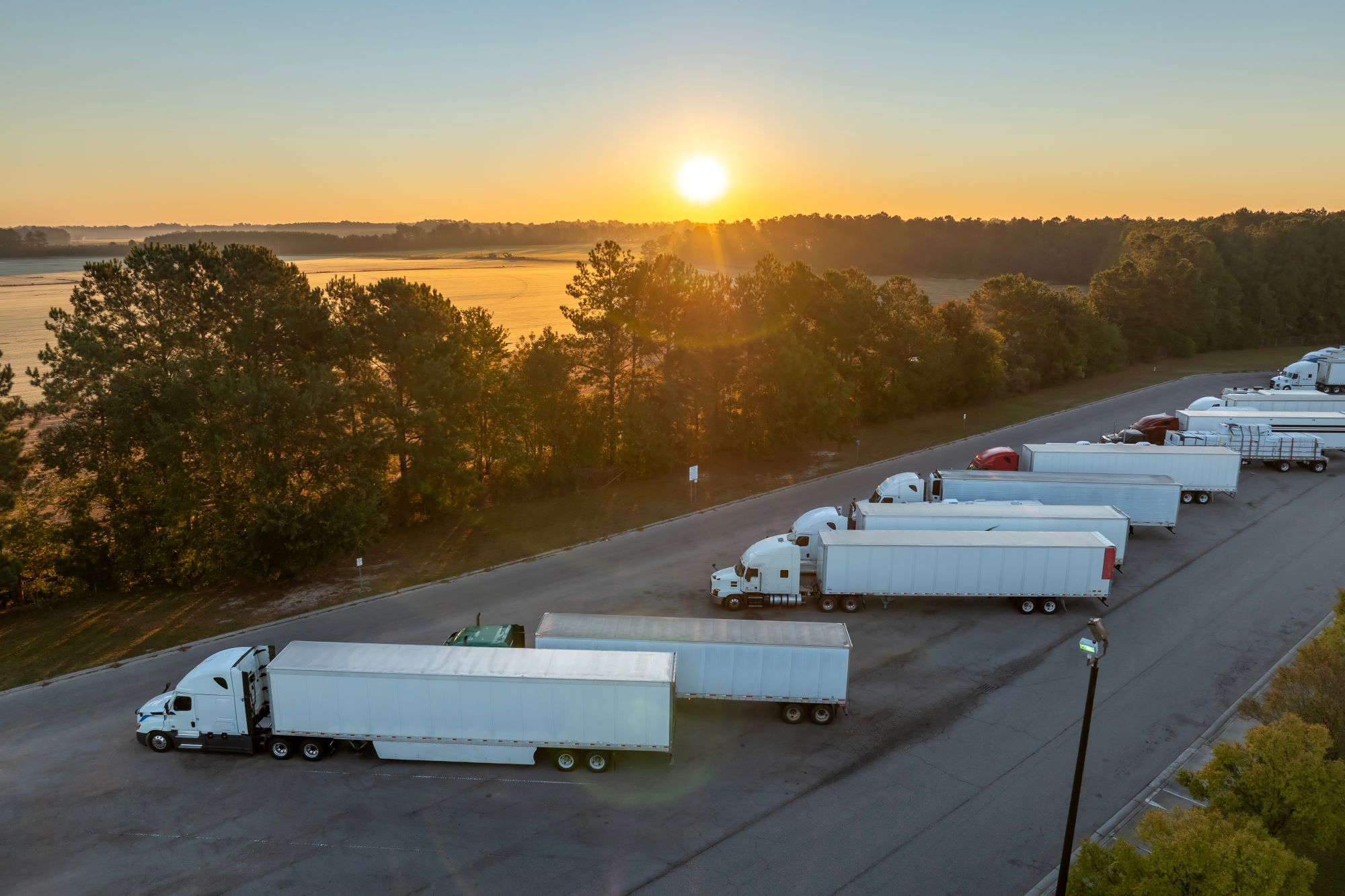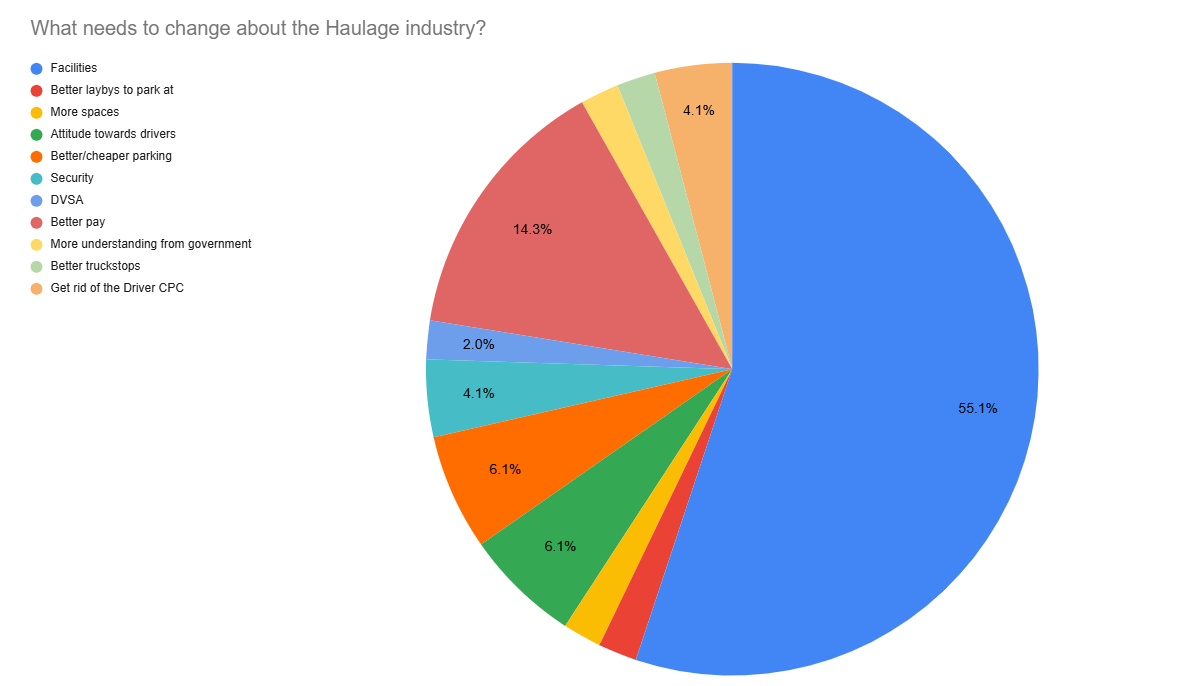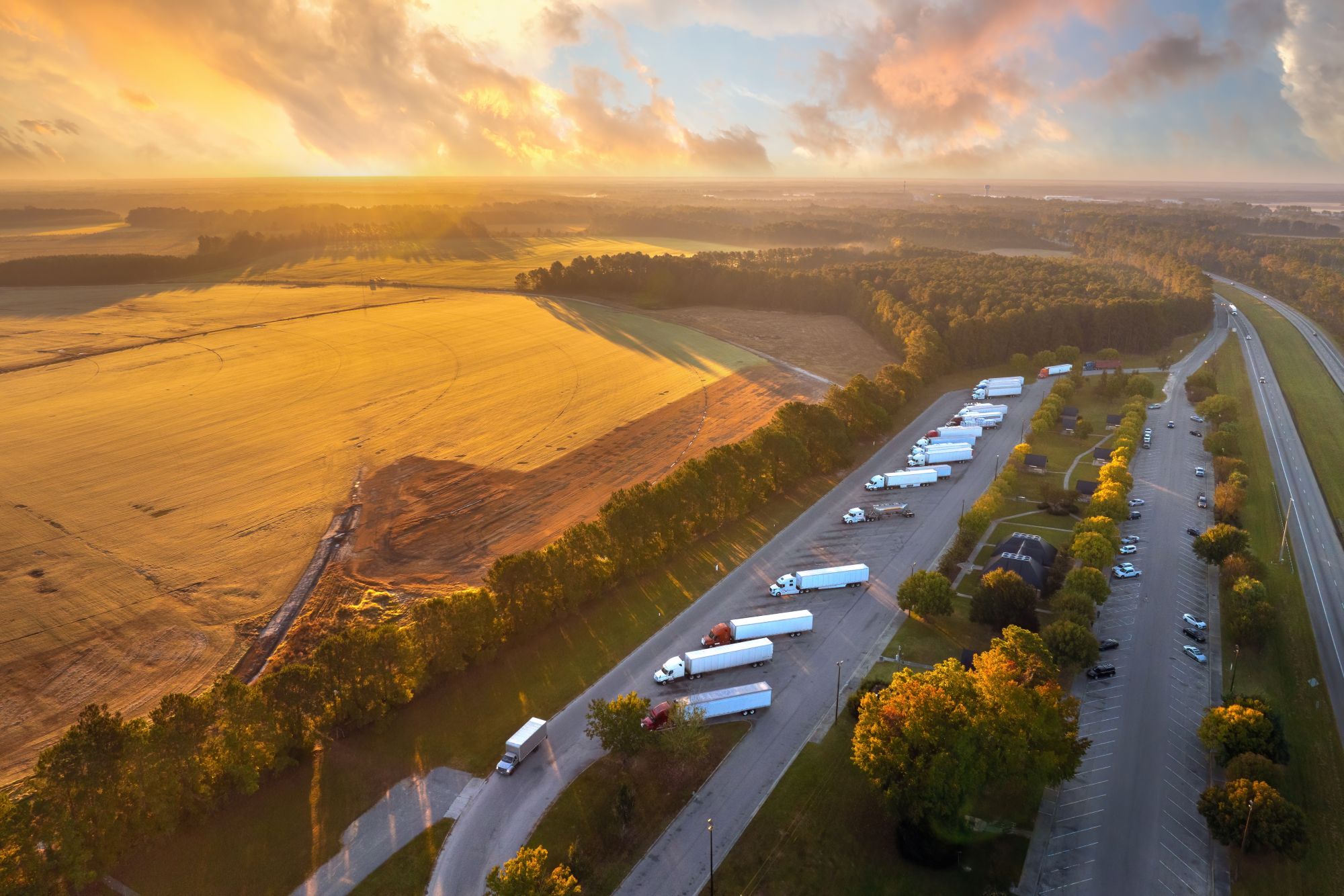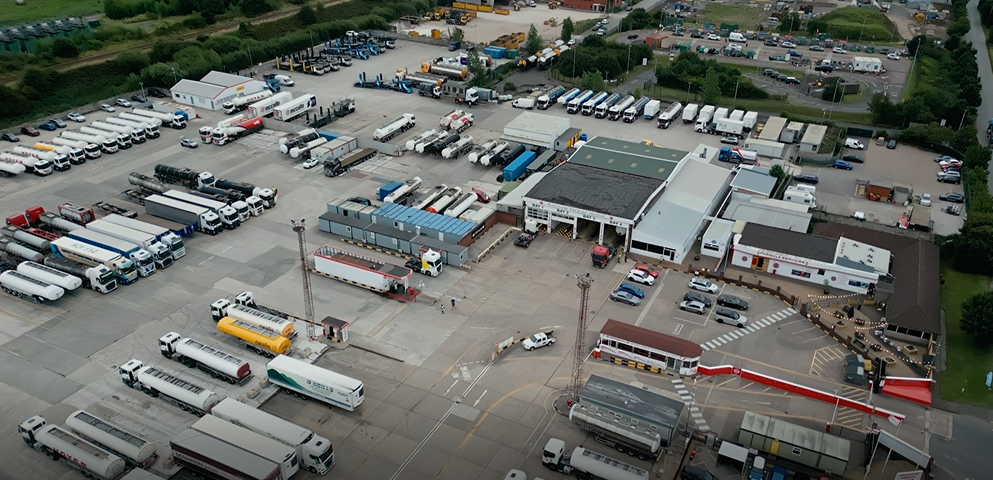
Susie Jones
Lastbilchauffører kræver reform af branchen
Oprettet: 05.02.2025
•
Opdateret: 05.02.2025
I øjeblikket udgør kvindelige lastbilchauffører i Storbritannien kun [1 %] (https://mydrivermedical.co.uk/news/12-misconceptions-about-hgv-drivers#:~:text=5.,pay%20gap%20for%20truck%20drivers) af alle chauffører - et tal, der er steget med [144 %] (https://www.linkedin.com/pulse/uk-sees-144-increase-female-hgv-drivers-hgvc-vcwge/) i løbet af det sidste årti, efterhånden som der er indført flere initiativer for at fremme mangfoldighed og lukke hullet i chaufførmanglen.
En artikel fra [Fleetpoint] (https://www.fleetpoint.org/fleet-management-2/encouraging-more-women-to-join-the-road-transport-industry/) beskriver de mange måder, hvorpå branchen kan tiltrække flere kvinder til branchen:
At dyrke et støttende og indbydende arbejdsmiljø.
Opgradering af infrastruktur og faciliteter.
Fleksible og familievenlige arbejdsordninger.
At skabe klare veje til karriereudvikling.
På trods af dette argumenterede chauffører på [sociale medier] (https://www.facebook.com/photo/?fbid=988050383364634&set=a.482170237285987&locale=en_GB) for, at disse mangeårige udfordringer i branchen skal løses for alle, før der indføres nye initiativer for at afhjælpe chaufførmanglen.
Chaufførmangel - hvor står branchen nu?
Chaufførmanglen har været et vedvarende problem for transportbranchen, men efter COVID-19 og Brexit nåede den et kritisk niveau. I 2024 manglede Europa, Norge og Storbritannien over [233.000] (https://www.iru.org/news-resources/newsroom/half-european-truck-operators-cant-expand-due-driver-shortages#:~:text=More%20than%20half%20of%20European,no%20significant%20action%20is%20taken.) lastbilchauffører - et tal, der vil overstige 745.000 i 2028 på grund af en aldrende arbejdsstyrke.
Branchen kæmper stadig med konsekvenserne og arbejder på at implementere nye initiativer for at fremme mangfoldighed, forbedre arbejdsforholdene og lukke kløften i arbejdsstyrken.
Regeringen har iværksat en række [33](https://www.gov.uk/government/topical-events/hgv-driver-shortage-uk-government-response/about#:~:text=We%20extended%20dangerous%20goods%20(ADR,to%20take%20refresher%20training%20now.) tiltag for at afhjælpe manglen på lastbilchauffører i Storbritannien. Herunder, men ikke begrænset til:
Øget effektivitet i eksisterende forsyningskæder.
Støtte og oplæring af nye lastbilchauffører.
Udvidelse af kapaciteten til test af lastbilchauffører.
Forbedring af licensprocesser.
Forbedring af forholdene.
Sikring af stabilitet i brændstofforsyningskæden.

Hvad skal ændres? Chaufførerne giver deres mening til kende.
49 % af chaufførerne på de sociale medier mente, at der skal gennemføres ændringer uanset køn - og 27 % af de kvindelige lastbilchauffører var enige i, at branchen skal udvikle sig for alle. 24 % sagde, at jobbet ikke længere var tiltrækkende, hvilket understreger behovet for forandring i branchen. Så hvad ønsker chaufførerne at få ændret?
Faciliteter
55% ønskede, at faciliteterne blev forbedret for alle:
"Der skal være bedre faciliteter og bedre behandling, punktum. Hele branchen er en katastrofe, og vi bliver dårligt behandlet."
"Faciliteterne er forfærdelige for alle bilister, mænd og kvinder."
I november 2024 viste en [Transport Focus-undersøgelse] (https://www.britsafe.org/safety-management/2024/uk-truckers-why-more-action-is-needed-to-make-their-working-lives-safer-and-healthier#:~:text=Improving%20roadside%20facilities&text=Drivers%20have%20long%20been%20telling,asked%20expressed%20dissatisfaction%20with%20both.), at to tredjedele af chaufførerne var utilfredse med truckstop-faciliteterne - med beskidte faciliteter, dårlige madmuligheder og mangel på socialt rum som væsentlige problemer.
Regeringen og transportbranchen har truffet vigtige foranstaltninger ved at investere 14 millioner pund for at fremme innovation og forbedre arbejdsforholdene.
I oktober 2024 fik 23 ansøgere tildelt op til 4,5 millioner pund til at forbedre deres truckstops. Opgraderingerne vil omfatte nye brusere, restauranter og forbedrede sikkerhedsfunktioner for at give chaufførerne større ro i sindet. Derudover vil ordningen skabe omkring 430 parkeringspladser til tunge lastbiler.
Løn
Bedre løn var nummer to på listen, hvor 14% af chaufførerne mente, at højere løn ville få flere til at søge ind i branchen:
"Gør det attraktivt for alle, øg lønningerne."
En lønstigning vil medføre betydelige omkostninger for branchens ledere. Hvis den gennemsnitlige lastbilchaufførs løn steg på linje med den nationale leveløn, kunne flådeoperatører stå over for yderligere 1,5 milliarder pund om året.
På trods af dette vil investeringer forbedre fastholdelsesgraden, reducere rekrutteringsomkostningerne og sænke uddannelsesomkostningerne. At tilbyde højere lønninger vil ikke kun gøre erhvervet mere attraktivt for nye deltagere, men vil også anerkende den kritiske rolle, chauffører spiller i opretholdelsen af forsyningskæden.
Holdning til chauffører
I årenes løb har offentlighedens holdning til lastbilchauffører udviklet sig markant. Livet som lastbilchauffør er ofte blevet romantiseret i film og populære medier - hvilket har fået mange til at tro, at de har det nemt. Men det har også præsenteret dem som hårdtarbejdende helte, et image, der er blevet forværret med tiden.
Mod slutningen af det 20. århundrede ændrede opfattelsen sig, da arbejdsforholdene blev hårdere, og lastbilchauffører fik uretfærdige stereotyper - ofte på grund af en forkert fremstilling i medierne og nogle gange på grund af nogle få uerfarne chauffører. Disse negative stereotyper blev mildnet under COVID-19-pandemien, da offentlighedens forståelse for lastbilchauffører voksede.
I dag er der respekt for lastbilchauffører - men branchen er stadig plaget af negative stereotyper og holdninger. Noget, som 6 % af chaufførerne gerne så ændret:
"Når jeg tænker tilbage på Covid, blev vi betragtet som helte, men bagefter vendte det tilbage til det normale. Det er ikke underligt, at de nuværende chauffører, mænd og kvinder, ønsker at forlade branchen. De er trætte af den dårlige behandling, de får hver dag."
"Det ville være rart ikke at blive behandlet, som om man var et udskud."
I de senere år er de sociale medier begyndt at udfordre og ændre negative opfattelser. Mange chauffører bruger platforme som TikTok og Instagram til at dele indsigt i deres rolle, aflive misforståelser og opnå respekt fra folk uden for branchen.
Feedback viser, at der er et presserende behov for, at transportbranchen gennemfører ændringer for at tiltrække og fastholde eksisterende og nye chauffører. Kvindernes underrepræsentation er fortsat en betydelig udfordring, og det er afgørende at investere i faciliteter, der imødekommer deres behov. Men denne investering skal være inkluderende og komme hele arbejdsstyrken til gode.

I hvilke lande er der mangel på lastbilchauffører?
Lande i Europa er hårdest ramt, og mange vognmænd er ude af stand til at udvide deres forretning, fordi de ikke kan finde kvalificeret arbejdskraft.
Europa har en aldrende lastbilchaufførpopulation med en [gennemsnitsalder på 47] (https://www.iru.org/news-resources/newsroom/half-european-truck-operators-cant-expand-due-driver-shortages#:~:text=The%20EU%2C%20Norway%20and%20the,an%20average%20age%20of%2047.). En tredjedel af lastbilchaufførerne er over 55 år og forventes at gå på pension inden for de næste ti år. Derudover er mindre end 5 % af lastbilchaufførerne i Europa under 25 år - hvilket understreger det hul, der vil være, når den aldrende arbejdsstyrke er gået på pension.
Findes der en dag, hvor lastbilchauffører påskønnes?
[HGV Drivers Day] (https://https://snapacc.com/newsroom/hgv-drivers-day-2025-giving-truckers-a-voice/) finder sted den 22. januar og blev etableret af NN1 Personnel. Dagen har til formål at fejre lastbilchauffører og alt det, de gør for økonomien og samfundet.
Hvad er udsigterne for lastbilbranchen i 2025?
Fra vores blog [The Road Ahead for 2025] (https://snapacc.com/newsroom/the-road-ahead-for-2025-truck-industry-trends-to-expect/) forventer vi, at følgende vil være fremtrædende i lastbilbranchen i år:
Omfavnelse af fordelene ved AI.
Håndtering af kønsforskelle og chaufførmangel.
Fremme af en grønnere industri.
Øget langdistancefragt.



